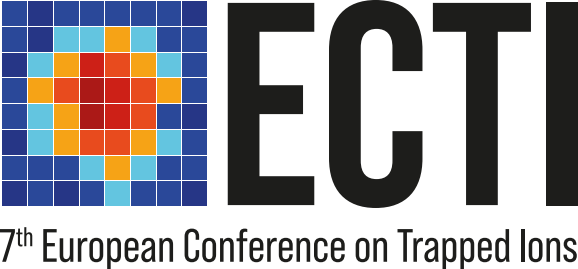Speaker
Description
Rydberg atoms arrays are one of the most promising platforms for quantum simulation. Alkali ground-state atoms, trapped in optical tweezers, are arranged into a well-defined arbitrary geometry before being transferred into low-angular momentum Rydberg states using laser pulses. Once in a Rydberg level, the atoms interact with each other through the dipole-dipole coupling, which enables to simulate the dynamics of arbitrary Hamiltonians [1,2].
However, the relatively short lifetime (in the 100 µs range) of low-angular momentum Rydberg atoms currently limits either the number of atoms or the duration of the simulation. Longer lifetimes can be obtained by switching to high-angular momentum Rydberg states, like the circular states [3], but observing the spin dynamics over a long timescale requires trapping the low-laser-intensity-seeking alkali Rydberg atoms using complex hollow beam geometries [4].
This is one of the reasons that motivated many groups to develop Rydberg experiments with alkaline-earth or alkaline-earth-like elements. Rydberg states of divalent atoms have an optically active ionic core that can be used to manipulate the atoms. If, for laser-accessible Rydberg states, the optical excitation of the ionic core leads to the fast auto-ionization of the atom, the auto-ionization rate exponentially decreases as the angular momentum of the Rydberg electron increases. This opens the way to use the ionic core electron transitions to image, trap or cool alkaline-earth circular states.
During the last few years, we have developed a new experiment to prepare and manipulate circular states of strontium. We have demonstrated that it possible to use the ionic core transition to slow down a beam of strontium circular atoms by using a counter-propagating 422nm laser beam. We have also shown that the residual electrostatic interaction between the ionic core and the Rydberg electrons opens the way to manipulate the state of the Rydberg electron using laser beams resonant with ionic core transitions, or to encode the state of a Rydberg atom with a given n onto one of the magnetic sublevels of the metastable state 4d3/2. This opens the way to state-selective fluorescence imaging of circular states [5].
[1] Barredo, D. et al, Nature 561, 79 (2018).
[2] Ebadi, S. et al, Nature 595, 227 (2021).
[3] Nguyen, T. L. et al, PRX 8, 011032 (2018).
[4] R.G. Cortiñas et al, PRL 124, 123201 (2020)
[5] A. Muni et al, Nat. Phys. 18, 502 (2022)

